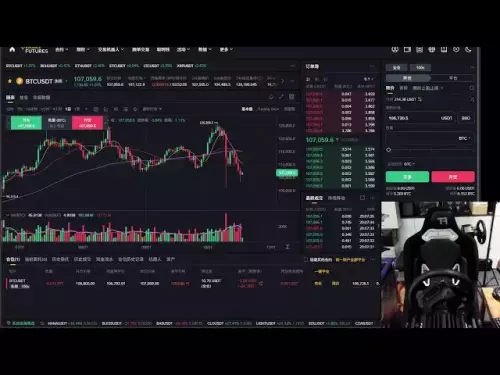 |
|
 |
|
 |
|
 |
|
 |
|
 |
|
 |
|
 |
|
 |
|
 |
|
 |
|
 |
|
 |
|
 |
|
 |
|
Cryptocurrency News Articles
TRON, Bandwidth, and Energy Optimization: A New Yorker's Guide to Smooth Transfers
Oct 17, 2025 at 09:43 pm
Navigate TRON's bandwidth and energy like a pro. Learn how to optimize your stablecoin transfers for speed, affordability, and zero TRX burns. Your guide to TRON mastery starts here.

TRON, Bandwidth, and Energy Optimization: A New Yorker's Guide to Smooth Transfers
So, you're navigating the TRON crypto market and want to send USDT or USDC without those annoying 'not enough resources' errors? Here's the lowdown. Optimize your bandwidth and energy and make smooth, predictable stablecoin transfers a reality.
Understanding TRON's Bandwidth and Energy
TRON uses two resources: Bandwidth and Energy. Bandwidth is for storing your transaction data, like the space it takes up on the blockchain. Energy covers computation inside smart contracts, which is crucial for TRC-20 transfers like USDT and USDC.
Bandwidth vs. Energy: What's the Deal?
Bandwidth tends to be steady, while Energy use can vary with contract complexity. You can get both by staking TRX. It’s like freezing your TRX – you don’t spend it, but it regenerates resources. Think of it as a crypto savings account that fuels your transactions.
Why Stablecoin Transfers Matter
TRC-20 stablecoins are smart-contract tokens. Each transfer calls a contract method, consuming Energy. Every transaction also uses Bandwidth. Run out, and the network burns your TRX. No one wants surprise fees, especially when you're dealing with stablecoins.
Optimizing Your TRON Transfers
Here’s how to avoid those TRX burns and keep things smooth:
- Test the Waters: Start with a small test transfer to gauge Energy and Bandwidth usage.
- Size It Up: Multiply the test results by your daily transfer count, then add a 20–30% buffer.
- Stake Smart: Stake TRX, allocating roughly 80–90% to Energy and 10–20% to Bandwidth.
- Monitor and Adjust: Check your burns weekly and tweak your stakes accordingly.
For personal use, a modest Energy stake and a tiny Bandwidth stake might do the trick. For periodic payouts, consider renting extra Energy on those days. This keeps your funds liquid and avoids surprise fees. It’s like paying for a taxi only when you need it!
Troubleshooting and Avoiding Myths
Most “fee surprises” come from Energy shortfalls on TRC-20 transfers. Always check Energy first. Use reputable wallets, double-check addresses, and watch out for fake contracts. Security is key, especially in the wild west of crypto.
TRON's Rise in the Crypto World
TRON has become a major player, known for stablecoin transactions, low fees, and high throughput. They process over 60% of global USDT transfers! TRON's staking integration with Ledger hardware wallets has been a game-changer, enhancing security and user engagement.
TRON's Tokenomics and Innovations
TRON employs deflationary tokenomics. Token burns exceeding new token creation reduce the circulating supply of TRX, boosting price stability. TRON handles up to 2,000 transactions per second (TPS) with minimal fees. This makes it attractive for high-volume transactions, especially in the stablecoin and dApp markets.
Challenges and Future Outlook
Like all blockchain networks, TRON faces regulatory challenges. Compliance is crucial. But with its focus on scalability and dominance in the stablecoin market, TRON is well-positioned for long-term growth.
Final Thoughts
TRON keeps transfers fast and affordable by splitting costs into Bandwidth and Energy. For stablecoin sends, prioritize Energy, keep a Bandwidth cushion, and hold a small TRX buffer. Monitor, adjust, and consider short-term rentals during busy periods. With this setup, you’ll get predictable, near-zero-burn transfers. Now go make those transfers like a true New Yorker – fast, efficient, and with zero BS!
Disclaimer:info@kdj.com
The information provided is not trading advice. kdj.com does not assume any responsibility for any investments made based on the information provided in this article. Cryptocurrencies are highly volatile and it is highly recommended that you invest with caution after thorough research!
If you believe that the content used on this website infringes your copyright, please contact us immediately (info@kdj.com) and we will delete it promptly.



















![[4K 60fps] Astral by oc3andark (1 Coin) [4K 60fps] Astral by oc3andark (1 Coin)](/uploads/2025/10/19/cryptocurrencies-news/videos/k-fps-astral-ocandark-coin/68f438453fa33_image_500_375.webp)










































